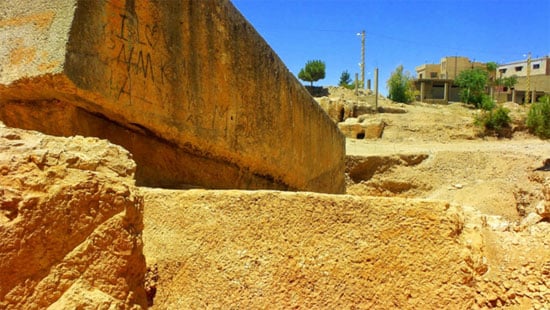Mal_Adjusted
Justified & Ancient
- Joined
- Aug 6, 2003
- Messages
- 2,246
Greets
http://www.csmonitor.com/2004/1228/p15s01-bogn.html
mal
How to succeed in history
Societies don't die by accident - they commit ecological suicide
By David Shi
Why did once flourishing societies collapse and disappear? Jared Diamond, a Pulitzer Prize-winning geographer at UCLA, has spent much of his career wrestling with this profound question. It is not merely a romantic mystery; the answers, he believes, offer us the prospect of self-preservation.
"Collapse: How Societies Choose to Fail or Succeed" is remarkable for its ambitious sweep and interpretive panache. Diamond studies four ancient societies across space and time: Easter Island in Polynesia, the native American Anasazi tribe in what is now the southwestern United States, the Maya civilization in Central America, and the isolated Viking settlement on the coast of Greenland. Although diverse in nature and context, these four societies experienced what Diamond calls "ecocide," unintentional ecological suicide.
For example, seafaring Polynesians settled on Easter Island 1,100 years ago. They cut the trees for canoes and firewood and used logs to help transport huge statues weighing as much as 80 tons. Eventually, they chopped down all the forests, and their society collapsed in an epidemic of cannibalism. By 1600, all of the trees and land birds on Easter Island were extinct.
"The parallels between Easter Island and the whole modern world," Diamond notes, "are chillingly obvious."
Diamond details how other societies pursued the same errors. But what makes the issue doubly fascinating is that some ancient cultures have found ways to persist for thousands of years. Japan, Java, and Tonga, for example, have flourished. What factors made some societies implode and others prosper?
Diamond, an evolutionary biologist trained in biochemistry and physiology, deftly uses comparative methods and multidisciplinary tools - archaeology, anthropology, paleontology, and botany - to marshal evidence that sustaining societies over time depends primarily on the quality of human interaction with the environment.
All of the vanished societies experienced environmental damage such as deforestation, soil erosion, the intrusion of salt water, or overhunting game animals. The second common factor was climate change, such as cooling temperatures or increased aridity. Add to that mix hostile neighbors, rapid population growth, and a loss of trading partners, and few societies can survive for long.
In each case, though, what ultimately caused ecocide was a series of flawed responses to societal crises. Environmental degradation does not ensure collapse. A society's fate, Diamond concludes, depends upon how it manages challenging situations.
He reveals, for instance, how the Vikings who settled in Greenland after AD 984 established a pastoral economy, raising sheep, goats, and cattle. They also hunted caribou and seal, and developed a flourishing trade in walrus ivory with Norway. But 300 years later, the Vikings vanished from Greenland. Documentary sources along with physical evidence reveal that their settlements gradually experienced deforestation and soil erosion. A colder climate in the 14th and 15th centuries impeded commerce with Norway and reduced the production of hay, which diminished their herds.
At the same time that the Vikings were being cut off from Norway, the Inuits began attacks on the Norse settlements in Greenland. Cultural prejudices prevented the Vikings from adopting Inuit technologies, such as harpoons, so they could not harvest whales. Nor were they willing to mimic the Inuits in developing dog sleighs, sealskin kayaks, and seagoing boats. As a result of these cultural prejudices, by 1440 the Vikings had all died out in Greenland, whereas the Inuits survive to this day.
Diamond's perspective is not solely historical. He also discusses contemporary developments in Somalia, Rwanda, Haiti, China, and Australia, as well as in Montana, a state that once was among the wealthiest in the nation but now struggles with poverty, population decline, and environmental problems.
Diamond complements his sobering analysis of collapsed civilizations with more uplifting examples of societies that have found ways to sustain themselves without overexploiting their environments.
What determines a society's fate, Diamond concludes, is how well its leaders and citizens anticipate problems before they become crises, and how decisively a society responds. Such factors may seem obvious, yet Diamond marshals overwhelming evidence of the short-sightedness, selfishness, and fractiousness of many otherwise robust cultures. He reveals that many leaders were (and are) so absorbed with their own pursuit of power that they lost sight of festering systemic problems.
Today, Diamond observes, the world is "on a nonsustainable course," but he remains a "cautious optimist." The problems facing us are stern, he notes, but not insoluble. They demand stiff political will, a commitment to long-term thinking, and a willingness to make painful changes in what we value.
The fact that the United States over the past 30 years has reduced major air pollutants by a quarter at the same time that energy consumption and population have risen 40 percent gives Diamond hope. So does the success of many nations in slowing their rates of population growth.
He concludes, "We have the opportunity to learn from the mistakes of distant peoples and past peoples." But the question remains, will we?
• David Shi is the president of Furman University in Greenville, S.C.
http://www.csmonitor.com/2004/1228/p15s01-bogn.html
mal
Last edited by a moderator:





